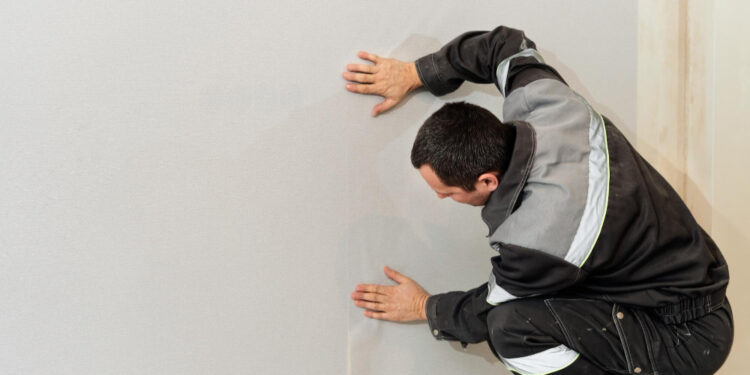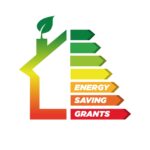In an era where energy efficiency is more important than ever, insulating your home’s walls is one of the most effective ways to reduce energy consumption and save on heating bills. If you live in a home with solid walls, you might think that insulation is a costly or difficult process, but with the right approach, it can be affordable and efficient. This article explores economical wall insulation solutions, particularly for solid walls, and how they can contribute to a warmer, more energy-efficient home.
Understanding Solid Wall Construction
Before diving into insulation solutions, it’s essential to understand the concept of solid walls. Unlike cavity walls, which have an empty space between two layers of brick, solid walls are made of a single solid layer, typically brick or stone. While solid walls are strong and durable, they are less effective at retaining heat compared to cavity walls.
Without proper insulation, solid walls allow up to 45% of heat to escape, leading to higher energy consumption and higher heating costs. Insulating these walls can make a significant difference in your energy bills and overall comfort.
Why Insulate Solid Walls?
1. Improved Energy Efficiency
The primary reason for insulating solid walls is to improve energy efficiency. By adding insulation to solid walls, you can prevent heat from escaping during the winter months and keep your home cooler during the summer. This reduces the need for artificial heating and cooling, which translates into lower energy bills.
2. Increased Comfort
A well-insulated home maintains a more consistent temperature, making it a more comfortable living environment. Insulation helps eliminate cold spots and drafts, ensuring that the indoor climate remains stable regardless of the weather outside.
3. Reducing Carbon Footprint
By consuming less energy, your home will also contribute to reducing carbon emissions. With governments around the world encouraging green building practices and sustainability, insulating your solid walls is an eco-friendly solution that aligns with global efforts to combat climate change.
Cost-Effective Insulation Methods for Solid Walls
When it comes to economical wall insulation, there are several methods to insulate solid walls, each with its advantages and cost considerations. The choice of insulation method will depend on the type of property, budget, and desired level of energy savings.
1. Internal Wall Insulation (IWI)
Internal Wall Insulation (IWI) involves fitting insulation materials on the inside of your walls. This is a popular method for homeowners looking for an affordable way to insulate solid walls without extensive external work.
Advantages:
- Cost-effective: IWI tends to be less expensive than external insulation.
- No external changes: If you live in a conservation area or have a property with aesthetic restrictions, IWI is a great option since it doesn’t alter the exterior of the building.
Materials Used:
- Insulated plasterboard: This can be directly fitted to the interior wall, providing a layer of insulation that doesn’t take up too much space.
- Mineral wool: A versatile and affordable insulation material that is commonly used for internal insulation.
Challenges:
- Space reduction: Since insulation is added to the inside of the wall, it can reduce the usable space of rooms, particularly in smaller properties.
2. External Wall Insulation (EWI)
External Wall Insulation (EWI) involves adding a layer of insulation material to the exterior of your home, which is then covered with a protective render or cladding. Although it tends to be more expensive than internal insulation, it offers more comprehensive thermal benefits.
Advantages:
- Improved energy performance: EWI generally provides more significant thermal benefits than internal insulation.
- Protects external walls: EWI acts as a weatherproofing layer, protecting your walls from rain, wind, and other external elements.
- No interior disruption: Since the insulation is installed on the exterior, there’s no need to disrupt the interior décor or lose space inside your home.
Materials Used:
- Expanded polystyrene (EPS): A lightweight and affordable insulation material commonly used for EWI.
- Mineral wool: Also used for external insulation due to its fire-resistant properties.
Challenges:
- Higher upfront cost: EWI is typically more expensive than IWI, though the long-term energy savings may offset the initial investment.
- Planning permission: In some cases, you may require planning permission for external wall insulation, especially if your home is listed or in a conservation area.
3. Insulating Paint and Coatings
For homeowners looking for a more straightforward and cost-effective insulation solution, insulating paints and coatings can offer a temporary or supplementary layer of insulation. These paints are applied directly to the internal or external walls and help reflect heat back into the room.
Advantages:
- Cost-effective: Insulating paints are among the most affordable insulation solutions.
- Easy to apply: You can apply insulating paints yourself, cutting down on installation costs.
- Minimal disruption: Unlike other methods, insulating paints do not involve major construction work.
Challenges:
- Limited effectiveness: While insulating paints can provide some level of insulation, they are not as effective as more robust methods like IWI or EWI.
- Temporary solution: Insulating paint is often best used as a temporary measure or in conjunction with other insulation methods.
Government Grants and Support for Wall Insulation
Many homeowners worry about the cost of insulating solid walls, but it’s important to explore government grants and financial incentives that can help make this process more affordable.
1. The Energy Company Obligation (ECO) Scheme
In the UK, the Energy Company Obligation (ECO) scheme requires energy companies to help homeowners improve the energy efficiency of their homes. Under this scheme, you may be eligible for a grant to help cover the cost of wall insulation.
How to Apply: Contact your energy supplier to check if you qualify for support through the ECO scheme. If eligible, you can get help with insulation costs, reducing your upfront investment.
2. Green Homes Grant
The Green Homes Grant was a UK government initiative that provided vouchers for energy-saving home improvements, including wall insulation. While this scheme is no longer active, it’s worth keeping an eye on similar future programs that might offer financial support for energy efficiency upgrades.
3. Local Authority Grants
Some local councils and authorities offer grants or low-interest loans for homeowners looking to improve the energy efficiency of their properties. Contact your local authority to explore potential funding options for solid wall insulation.
How Much Can You Save with Solid Wall Insulation?
The savings from insulating solid walls can be significant. The exact amount you save will depend on several factors, including the size of your home, the type of insulation installed, and your existing energy consumption.
On average:
- Internal Wall Insulation: Can reduce heating costs by around £120-£270 per year for a typical detached home.
- External Wall Insulation: Can save £210-£400 per year for larger properties or homes with higher energy consumption.
The payback period for solid wall insulation varies but typically ranges from 5-10 years, depending on energy savings and the initial cost of installation.
DIY vs. Professional Installation
While some homeowners may be tempted to DIY their wall insulation to save costs, it’s essential to weigh the pros and cons. Professional installation ensures that the insulation is fitted correctly, maximizing its effectiveness and longevity.
1. DIY Considerations
Pros:
- Lower upfront costs: DIY insulation can save you money on installation fees.
- Flexibility: You can complete the project at your own pace.
Cons:
- Limited options: Some insulation methods, such as external insulation, require professional expertise and equipment.
- Risk of poor insulation: Improperly installed insulation can lead to reduced performance and even damp issues.
2. Professional Installation Benefits
Pros:
- Expert advice: Professionals can recommend the best insulation method for your specific property.
- Quality assurance: Professional installers will ensure that the insulation is fitted correctly, reducing the risk of damp or condensation.
- Warranty: Many professional installations come with warranties, giving you peace of mind for years to come.
Cons:
- Higher initial cost: Professional installation can be more expensive, though the long-term benefits often outweigh the upfront expense.
Conclusion
Insulating solid walls is a smart investment for homeowners looking to reduce energy consumption, lower heating bills, and create a more comfortable living environment. Whether you choose internal wall insulation, external wall insulation, or more cost-effective options like insulating paint, improving your home’s thermal performance doesn’t have to be prohibitively expensive. By taking advantage of government grants and choosing the right insulation method for your property, you can enjoy a warmer, more energy-efficient home for years to come.
Energy Saving Grants is your trusted partner for accessing government energy saving grants designed to enhance the energy efficiency of homes across England, Scotland, and Wales. Specializing in energy efficiency grants, they assist homeowners, tenants, and landlords in securing grants for energy efficiency measures such as solar panels, insulation, and heating systems. Their expertise covers a range of schemes including the ECO, LA Flex, and the Great British Insulation Scheme. With quick decisions, Trustmark approved installers, and free expert advice, Energy Saving Grants simplifies the application process for government grants for energy efficiency, helping reduce energy bills and carbon footprints.

















































